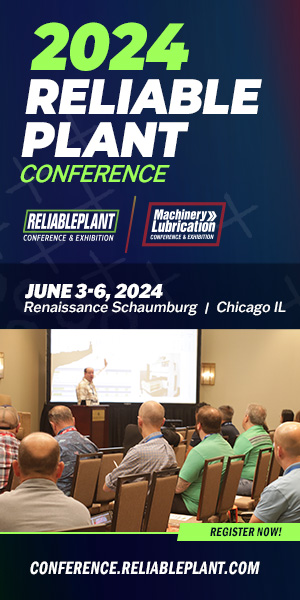
Many organizations have embarked on improving their asset performance and reliability. However, the harsh reality is most struggle to implement the actions necessary to achieve the desired outcomes. Consider how often other management initiative roll out and are met with comments like, "Here comes another flash in the pan." And many times, the comments end up being right.
Understanding the steps required for successful initiative implementation enables management and leadership to create buy-in with team members. Leaders discover a practical, people-focused approach for deploying any program by breaking down a typical implementation framework into its components.
Recognizing the Need for Change
According to Eliyahu Goldratt, an Israeli physicist who later became a business management educator and philosopher, businesses have three primary goals that support the mission of making money to enable the organization’s activities:
- Throughput - Accomplished via sales, not production
- Inventory - Money invested in items intended for sale
- Operational Expense - Money spent turning inventory (materials, assemblies) into throughput
Organizations expect the maintenance function to deliver these goals by improving the items that drive them. These include:
-
Throughput
- Capacity assurance
- Availability and reliability
- Safety
- Environmental compliance
-
Inventory
- Better quality
- Buffer reduction and elimination
- Food safety (if applicable)
- Rework and scrap reduction
-
Operational Expense
- Lower Cost of Goods Sold (COGS)
- Reduced labor
- Less spare part holdings
- Fewer maintenance rework needs
- Right decisions from data within the Computerized Maintenance Management System (CMMS)
- Reduced failures through defect elimination
It is common to find facilities struggling to meet acceptable standards within the three primary goals listed above. Impediments to reaching these goals often include:
- Frequent equipment failures that hinder production capacity.
- A lack of collaboration between other facility teams and maintenance.
- Limited or no training for maintenance and production.
- Inadequate standardized maintenance strategies for physical assets.
- Lack of a clear vision and metrics for driving progress and success.
These shortcomings can leave money on the table and prevent a facility from reaching its goals.
Assessing the Situation
The proven approach is to leverage a formal reliability assessment to understand the opportunities comprehensively. Consulting groups or corporate resources vet the organization's processes and performance against the "better" reliability practices, not maintenance. Many executives see maintenance as a cost to be optimized, and it is. However, it’s important to realize that maintenance alone only controls a small portion of the overall reliability.
The assessment output gives a facility snapshot and a report that clearly defines the trouble spots and where things are going well. The gaps are now evident. Depending on the site, it is common to feel overwhelmed, and the popular question is, "Where do we start?”
Creating the Action Plan
With the assessment report complete, it’s time to scope the work and build an action plan. This effort must be treated like an engineering project, and an action plan should be developed. An understanding of the financial investment is also required. Consider asking:
- How long is this going to take?
- What resources are needed?
- Is capital money required to make it work?
Once completed, the plan can and should change. However, the plan will change based on business needs. Sections of the project can be collapsed to focus on the burning issues, but the project should capture the known opportunities from the gap assessment. Capturing all the opportunities is a way to document those items in the roadmap for later resolution.
Garnering Executive Support
Implementation requires resources, funding, and time to change the status quo. After reviewing the assessment report and scoping the plan, begin with garnering executive support.
Start by building a business case. Executives speak in financial terms, and it's not just about cost avoidance; maintenance can be a profit center. Work with an internal or external solution provider to determine an estimated cost.
Additionally, realistic timing expectations should be set. Action plans frequently underestimate the time required for change. Transitioning away from a reactive organization and getting to the point of sustaining it for the long haul can take up to three to five years. Business results will happen sooner, but facilities must entrench the changes in the team members to sustain them.
Leveraging the Most Important Asset
For the implementation to succeed, a facility must engage the people's hearts and minds. While many might think otherwise, the reality is that most people don’t resist change – they resist being changed. To avoid this, they must understand the change from all sides and the “why."
Instead of focusing solely on the positives of the change, consider all four quadrants.
- Positives of changing
- Negatives of changing
- Positives of not changing
- Negatives of not changing
These must be articulated for people to see change as an overall win. Understand that they, too, are investing in the implementation activities from their position. Explain the “why” and get people engaged.
Understanding the “Why”
Next, it's crucial to convey the “why” to win team member support. It is recommended that this effort be approached quickly. A steering team should oversee the activities and provide reporting to the executive leadership. One of the first objectives of the steering team is to develop the mission, vision, and guiding principles. This helps provide project clarity and align the entire organization, which is critical for overall success. The steering team also combines the business case, the compelling reason for the change, and the vision into the "why."
With those items in place, it's time to communicate the “why” in an educational team meeting. Leadership will communicate the compelling reasons for change and the organization's goal, mission, and guiding principles. Use the vision to paint a picture of the future state, not just for maintenance and reliability but also for operations. Being slow to educate team members on the “why” can ultimately lead to severe implementation lags. This process can also be repeated to help keep everyone on track.
Education for Effectiveness
One challenge is creating a learning organization where minor mistakes are accepted if there are lessons to be learned. After all, knowledge is power.
An important part of the plan is defining the educational requirements. Many organizations do not provide formal education on aspects such as planning and scheduling, root cause analysis, or reliability-centered maintenance. For example, a basic understanding of reliability-centered maintenance concepts is essential for success when defining maintenance strategies.
Before asking team members to define business processes, help them understand good and better processes. Education helps them know that while there are differences between these, such as the operating context, they also share many similarities. The training helps them see that and provides the knowledge to determine the future state from an intelligent process perspective.
Build the Processes
Relying on tribal knowledge is a risky business. The likely reality is that people will retire or change companies, and the experience will walk out the front door. Six Sigma teaches that every product or positive result comes from processes.
Utilize the teams to define and document the business processes and working methods. Focus not on how things have been done for the last 20 years but on resolving the gaps with better practices. Determine the process owner, and don't forget to leverage informal leaders. Be sure to validate the processes, walk through the steps, and ensure they achieve the desired objectives without creating redundancies.
Once the processes are defined and communication and workflow are optimized, the organizational alignment can be tweaked to match the business’s needs. The roles and responsibilities become clear when coupled with the proper spans of control based on the processes' maturity.
Implement an audit process with a scoring sheet to ensure the business processes and procedures work. Conducting audits as a group, not individually, is encouraged. Doing so fosters collaboration and teamwork while setting performance expectations. Remember that audits are for processes, not people.
If the business processes are not working, why? Get agreement on the corrections if needed and implement them. The audit should occur weekly at first and may taper off to monthly over time. This is how processes are sustained.
Taking Action
Generally, the people closest to the work know the issues and how to resolve them. Once the processes are in place, from a continuous improvement perspective, these individuals become even more valuable.
But how do you empower these team members to solve the problems and, from a defect-elimination perspective, prevent future issues? Consider providing them with a platform for ownership in their work by creating small, informal teams empowered to take action.
Celebrating the Wins
Communication—or a lack thereof—is a serious issue for many organizations. It's not just about putting notices on the bulletin board in the breakroom – it needs to be personal. Remember that effective and thoughtful communication is the link between transparency and trust. As part of this, success must be celebrated to reinforce the behaviors and results. A simple thank you or fist bump can go a long way.
During times of change, there are usually three groups of people
- Those who buy-in upfront and are vocal in support of the change.
- Those who conform but have not bought in yet, often adopting a “wait-and-see” mindset.
- Those who are vocal against change.
Celebrating successes and communicating effectively enables leaders to convert those merely conforming or sitting on the fence into engaged team members.
In Conclusion
Disruption abounds, management changes and business needs vary. Achieving higher levels of reliability is a journey that never ends. Yet, the principles that govern the change process are consistent from an implementation perspective. The most significant variable is the people. By lighting the fire and fueling the people's passion at the lowest levels, one can anchor and sustain the change, even in times of disruption.
This paper was provided as supporting materials for Jeff Shiver's speaking session at the Reliable Plant Conference. To learn more about attending Reliable Plant Conference, click here.





